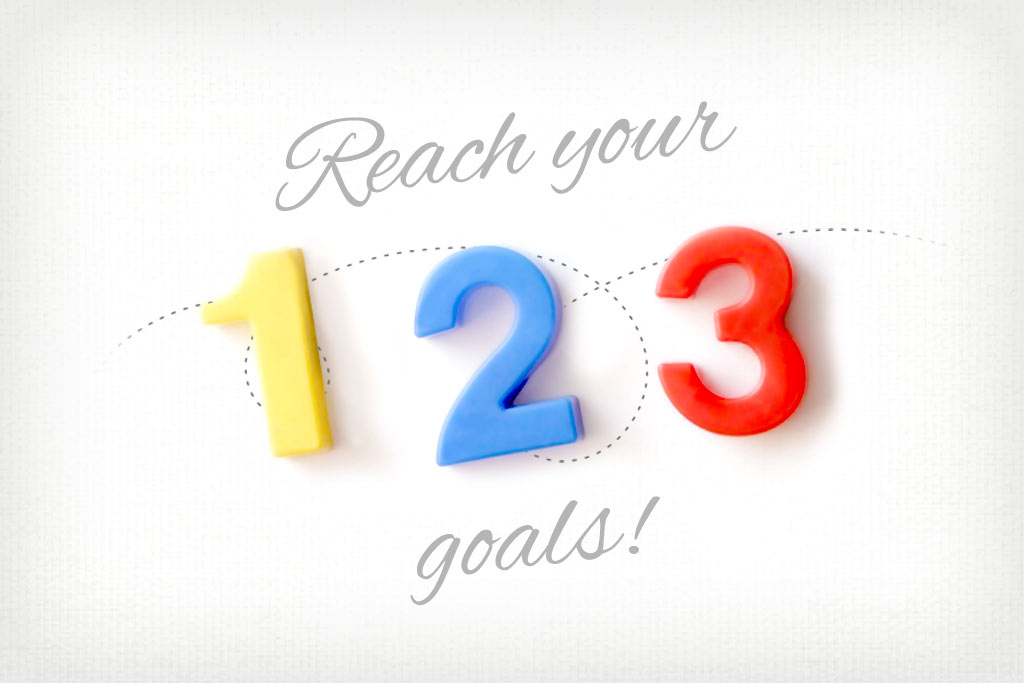How to set SMART goals and achieve them
Want to make significant progress in your business, career or life? Find out why SMART goals are so powerful and how to set one.
When it comes to goal setting, we tend to get most inspired in January each year, when we make long, hasty lists of everything we’ve ever wanted to achieve or have in our lives.
This usually consists of familiar goals like going on a diet to get that supermodel body, joining a gym, finding a new partner or training for a new career. The list goes on and on.
Don’t wait until January to set yourself goals
Personally, I have always hated the pressure to have a New Year’s resolution. The good news is that you can set achievable goals at any time of the year so there’s no need to wait until January!
Whatever your desired end results, the best way to achieve them is by setting yourself goals that you have:
- Carefully considered.
- Narrowed down to a top 10.
- Ranked in terms of importance to you.
The best way to do this is to make sure your goals are clearly defined in the first place. Paul J Meyer defines the characteristics of SMART goals in his book ‘Attitude is Everything’.
By applying the SMART guide below to consider each of your goals, you will be able to more easily assess which ones you truly want to attain.
This process will really help focus your attention on the most important areas of your life. And each time you apply this process to your thinking you will be able to make better choices about which goals to keep and which ones to chuck in the bin.
What is a SMART goal?
Here are the five characteristics a SMART goal consists of.
S – Specific
Is your goal clear and unambiguous? To make goals specific ask yourself the following questions:
- What –is it that I want to achieve?
- Why – do I want to achieve this? Identify the specific reasons and benefits you will gain if you accomplish this goal.
- Who – is involved? Is it just for yourself or will it involve or impact others, such as your friends or family?
- Where – identify a location.
- Which – list any requirements or obstacles you may encounter.
M – Measurable
Goals need to be measurable in order to gauge progress. This is important because if you remain in the planning stages it may never actually come to fruition.
Ask yourself, what small goals can I set for myself that would take me one step closer to my ultimate goal?
A – Attainable
This criterion states that goals should be realistic and attainable. It’s good to challenge yourself and aim to punch above your weight but remain grounded at the same time.
Ask yourself ‘How can the goal be accomplished?’ As you work through the responses you should be able to gauge whether your own abilities and skills match that criteria. You’ll also start identifying new ways that you could reach them that you may not have considered before.
R – Relevant
A relevant goal is one that supports or is in alignment with both who you are as a person and your other goals. It also needs to positively drive you forward towards reaching your ultimate goal.
Ask yourself, is this the right thing for me to be doing? What will it achieve for me? Does it take me one step closer to my overall goal? Do I need to do this right now?
T – Time limited
Identify a target end date for each goal you want to set yourself. By committing to a timeline it will help to keep you focused and on track to achieve the end result.
Ask yourself, will this choice help me stay on track? When? Where will I be next week, next month, in 6 months? What do I really want to achieve today?
Achieving our goals spurs us on to aim for more
When we achieve our goals in life, it brings with it a deep sense of satisfaction, increases our self-belief and spurs us on to aim for bigger and brighter goals.
They may not magically make your life perfect, but they will certainly help you along your own personal journey. So why not get out there and aim to become the best goal getter ever – now there’s a goal!










